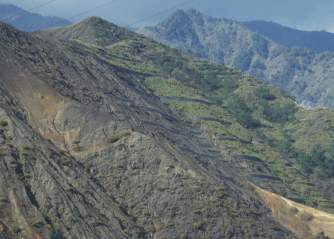140 YEARS AGO TODAY

Nov 29 1864
At dawn on November 29, 1864, approximately 700 U.S. volunteer soldiers commanded by Colonel John M. Chivington attacked a village of about 500 Southern Cheyenne and Arapaho Indians along Sand Creek in southeastern Colorado Territory.
John M.Chivington was ordained in 1844. He accepted whatever assignment the church gave him. For a time in 1853 he assisted in a Methodist missionary expedition to the Wyandot Indians in Kansas.
In 1860, he was made the presiding elder of the Rocky Mountain District of the Methodist Church and moved to Denver to build a church and found a congregation.

Colonel John M. Chivington
When the Civil War broke out, Colorado's territorial governor, William Gilpin, offered Chivington a commission as a chaplain, but he declined the "praying" commission and asked for a "fighting" position instead.
After the defeat of the Confederacy's Western forces, Chivington was a leading advocate of quick statehood for Colorado, and the likely Republican candidate for the state's first Congressional seat.

Kiowa and Cheyenne leaders pose in the White House conservatory with Mary Todd Lincoln (standing far right) on March 27, 1863, during meetings with President Abraham Lincoln, who hoped to prevent their lending aid to Confederate forces. The two Cheyenne chiefs seated at the left front, War Bonnet and Standing In the Water, would be killed the next year in the Sand Creek Massacre. -Archives of THE WEST
Under the terms of the 1851 Treaty of Fort Laramie, Cheyenne and Arapaho territory included much of the front range of Colorado. But major gold strikes in the mountains west of Denver in 1858 and 1859 precipitated a tide of Euro-American immigration.
Chivington took advantage of tensions between Colorado's burgeoning white population and the Indians by blasting the territorial governor and others who counseled peace and treaty-making with the Cheyenne. In August of 1864, he declared that "the Cheyennes will have to be roundly whipped -- or completely wiped out -- before they will be quiet. I say that if any of them are caught in your vicinity, the only thing to do is kill them."
A month later, while addressing a gathering of church deacons, he dismissed the possibility of making a treaty with the Cheyenne: "It simply is not possible for Indians to obey or even understand any treaty. I am fully satisfied, gentlemen, that to kill them is the only way we will ever have peace and quiet in Colorado."
Chivington led a regiment of Colorado Volunteers to the Cheyenne's Sand Creek reservation, where a band led by Black Kettle, a well-known "peace" chief, was encamped.

Black Kettle and other Cheyenne chiefs conclude peace talks at Fort Weld, Colorado, in September 1864.
Federal army officers had promised Black Kettle safety if he would return to the reservation, and he was in fact flying the American flag and a white flag of truce over his lodge, but Chivington ordered an attack on the unsuspecting village nonetheless.
Using small arms and howitzer fire, the troops drove the people out of their camp. While many managed to escape the initial onslaught, others, particularly noncombatant women, children, and the elderly fled into and up the bottom of the dry streambed. The soldiers followed, shooting at them as they struggled through the sandy earth. At a point several hundred yards above the village, the people frantically excavated pits and trenches along either side of the streambed to protect them.

A modern view of the Sand Creek site.
(National Park Service)
Some attempted to fight back with whatever weapons they had managed to retrieve from the camp, and at several places along Sand Creek the soldiers shot the people from opposite banks and presently brought forward the howitzers to blast them from their scant defenses.
After hours of fighting, the Colorado volunteers had lost only 9 men in the process of murdering between 200 and 400 Cheyenne, most of them women and children. After the slaughter, they scalped and sexually mutilated many of the bodies, later exhibiting their trophies to cheering crowds in Denver.

Chief Black Kettle Moke-Tavoto
Chief Black Kettle survived the attack on his peaceful camp in 1864 by Chivington only to have the same kind of bad luck on the Washita River in Oklahoma at the hands of George A. Custer four years later. Black Kettle died along with his wife Medicine Woman (who was wounded several times in the Sand Creek Massacre).
Chivington was widely praised for the "battle" at Sand Creek, and honored with a widely-attended parade through the streets of Denver. Soon, however, rumors of drunken soldiers butchering unarmed women and children began to circulate, and at first seemed confirmed when Chivington arrested six of his men and charged them with cowardice in battle.
The six, who included Captain Silas Soule, were in fact militia members who had refused to participate in the massacre and now spoke openly of the carnage they had witnessed. Shortly after their arrest, the U.S. Secretary of War ordered the six men released and Congress began preparing for a formal investigation of Sand Creek.

Captain Silas S. Soule
Soule himself could not be a witness at any of the investigations, because less than a week after his release he was shot from behind and killed on the streets of Denver.
Although Chivington was eventually brought up on court-martial charges for his involvement in the massacre, he was no longer in the U.S. Army and could therefore not be punished.
In 1883 Chivington re-entered politics with a campaign for a state legislature seat, but charges of his guilt in the Sand Creek massacre forced him to withdraw. He worked as a deputy sheriff until shortly before his death from cancer in 1892.
-http://www.sandcreek.org/massacre.htm
-http://www.pbs.org/weta/thewest/people/a_c/chivington.htm
-http://www.donvasicek.com/kettle.html
-The Search for the Site of the Sand Creek Massacre



















Recent Comments